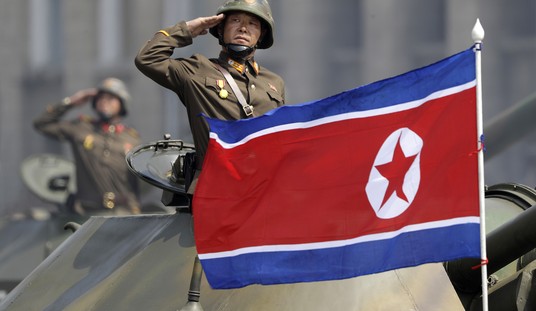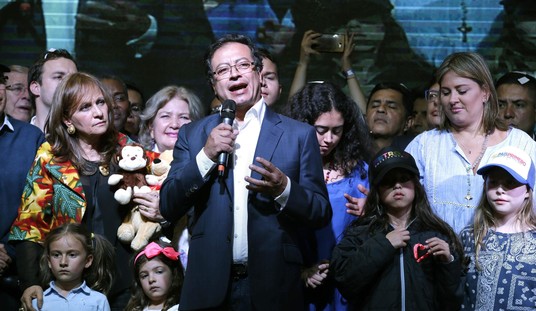We have become so used to government actors being malefactors, being lied to, and being pushed around that it becomes natural to suspect that when anything bad happens, somebody is behind it.
The truth is, stuff happens. Mistakes are made, and acceptable risks sometimes lead to bad results. Usually, you can smell the stench of bulls**t if you sniff deep enough, and sometimes the BS is hidden enough that it takes a long time to come out. As often as not--more often than not--the term "conspiracy theory" is thrown out to label a perfectly plausible explanation for something as beyond the pale.
The "lab leak hypothesis" was labeled a conspiracy theory not because it was an extraordinary explanation for COVID, but because it was an inconvenient one that needed to be slandered to hide the truth.
But in most cases of bad things happening, it is the result of incompetence or bad luck, not bad intentions.
I was a little surprised to see so much speculation that the horrible mid-air crash last night was the result of an intentional act. It obviously is not IMPOSSIBLE, but it is an extraordinary claim that requires extraordinary evidence.
Difficult to believe this was not intentional.
— Billboard Chris 🇨🇦🇺🇸 (@BillboardChris) January 31, 2025
Why haven’t they named the third pilot? pic.twitter.com/nObdnWxjVH
The videos apparently showing the military helicopter heading straight for the American Eagle flight have sparked a round of speculation that the accident was intentional, which strikes me as just short of absurd.
Stop slandering dead service members who made a tragic mistake when your aviation experience ends at ordering a cocktail at cruise.
— Bonchie (@bonchieredstate) January 31, 2025
The latest video does not show an intentional act. It shows exactly how the accident happened to anyone who has any experience in this area.
The videos show no such thing, and with a bit of common sense and spatial awareness, you can work this out for yourself. The two aircraft were flying essentially perpendicular to each other, with one descending and the other at a pretty steady altitude. The appearance that the helicopter is flying straight into the jet is an optical illusion because you are seeing a two-dimensional representation of an event that took place in 3 dimensions. One second before or one second after and the aircraft would have had an extremely close call, not a collision, because they were on radically different flight paths.
On the contrary, this shows exactly what many of us who actually fly for a living speculated.
— Bonchie (@bonchieredstate) January 31, 2025
The Blackhawk is in a nose down attitude. It’s dark outside. Lots of light pollution in the background.
Have you ever tried to spot an aircraft from the side in that situation? https://t.co/pf73ZgSJzK
Lots of Blackhawk pilots have spoken up over the past few hours to describe the conditions under which these flights take place, and they are inherently dangerous at night and especially in cities. Night vision goggles eliminate your peripheral vision, the environment is saturated with light sources, the pilots may not know which planes are which, and the radio communications are a nightmare of confusion in such a crowded environment.
I was a Blackhawk helicopter crew chief in the Army.
— Mark McEathron (@Mark_McEathron) January 30, 2025
I was even a Flight Instructor. This means that I trained Crew Chiefs and ensured that they completed all training annually to maintain their flight ratings.
One massive responsibility we had was to be the eyes for the…
The helicopter is nearly invisible in such circumstances, and the pilot likely tracked a nearby plane instead of the one it collided with.
I was a Blackhawk helicopter crew chief in the Army.I was even a Flight Instructor. This means that I trained Crew Chiefs and ensured that they completed all training annually to maintain their flight ratings.One massive responsibility we had was to be the eyes for the pilots. We handled airspace obstacle avoidance and communicated potential risks to the pilots.Quite often we would train as a flight of 2 or 3 birds flying in formation.It was my job to have my head out the window and tell the pilots that the aircraft behind us was "staggered right at 3 discs". (We measured close distances in terms of the diameter of our rotor discs).I can tell you after doing this for hundreds of hours, even when you know EXACTLY where a Blackhawk is, and you have night vision goggles on, it is EXTREMELY hard to SEE the aircraft.These birds are designed to be hard to see at night.The red and green lights on the side get lost in the lights of the city below. The only "lights" on top of the aircraft are called "slime lights" because they are a very very very dim green. Incredibly difficult to see.If you are above the helicopter, even if it has it flood light or spot light (2 different lights) on, underneath it, it is still hard to see the bird because all of that illumination is below the airframe.Another thing people should know is just how busy things can get on the aircraft. Pilots are talking to each other about what they are observing on the instrument panels. This means neither are looking outside the aircraft.The crew chief might be conducting a fuel check, where we would also be looking up into the cockpit at the fuel gages and the clock. This CAN lead to moments where all 3 people on the aircraft are all looking inside the aircraft.It's not supposed to happen that way. We are supposed to announce when we are "coming inside" or are "back outside" the aircraft. But that doesn't always happen.Also, in cities like DC, the radio traffic is constant and can make it hard to filter out what is important for you to listen to.Checking instruments, doing math, reading checklists, and listening to multiple radios all at the same time is HARD. Mistakes happen.Anyone out there telling you that they find the aircraft collision to be suspect, have NEVER been in a flight crew and they have ZERO idea what they are talking about.Ignore them all. Better yet, mock the hell out of them.999 times out of 1000 aircraft incidents always come down to a series of pilot and crew errors. Humans are involved. They aren't perfect.Tonight, my heart and mind is with the families of those involved in this tragic event. I won't join the chorus of idiots making speculations.
As a pilot, here is what I think happened:
— visionik — e/acc (@visionik) January 30, 2025
Facts:
1. American Airlines flight 5432 (LANDING FLIGHT), a CRJ700 operated by PSA airlines, was inbound to runway 33 on whats called "short final", the last stage of landing, about 400 feet in altitude.
2. An Army Blackhawk training… pic.twitter.com/rwVqHbCgJG
As a pilot, here is what I think happened:Facts: 1. American Airlines flight 5432 (LANDING FLIGHT), a CRJ700 operated by PSA airlines, was inbound to runway 33 on whats called "short final", the last stage of landing, about 400 feet in altitude. 2. An Army Blackhawk training flight PAT25 (HELICOPTER) was flying perpendicular to the flight path of 5432 along the Potomac river. The Potomac is a designated helicopter flight path / flight corridor.3. PAT25 was flying on Visual Flight Rules (VFR); flight 4532 on Instrument Flight Rules (IFR). This means that flight 5432 had priority and the helicopter should have been constantly looking out visually for other aircraft.4. Moments before the crash, the DCA tower called to PAT25 and asked them to confirm they had the "[other] aircraft in sight".5. PAT25 replied that they had the aircraft in sight.Opinion:PAT25 actually had another aircraft, the DEPARTING FLIGHT, in sight, and did not realize PAT25 was descending directly into its flight path.
A lot of very smart people are confused by what appears to be a highly unlikely event happening before their eyes, but the event is far more likely than you would imagine under the circumstances. In fact, the previous night a go around for a passenger jet was necessary because of a different military helicopter at the same airport.
Helicopters flying along Potomac frequently pose dangers to passenger jets https://t.co/gAUVMXAxs5
— Post Business (@washpostbiz) January 31, 2025
There were lots of factors likely involved in this crash. The helicopter was above its maximum assigned altitude, the pilots were using NVGs, the airspace was crowded, and the tower was undermanned. It seems likely that the undermanned tower and a navigation mistake were the proximate causes of the attack, and the frequent intersection of military and civilian traffic made something like this inevitable.
Former Blackhawk pilot here. I’ll try to describe it for you.
— Matt Leitch (@MrStand_Fast) January 31, 2025
Imagine you are looking at the world through toilet paper tubes, and everything is just different shades of green and black, with stars and ground lights hard to differentiate and aircraft lights that look the same…
Clues emerging from the moments before the deadly collision Wednesday night between an Army helicopter and an American Airlines passenger jet suggest that multiple layers of the country’s aviation safety apparatus failed, according to flight recordings, a preliminary internal report from the Federal Aviation Administration, interviews with current and former air traffic controllers and others briefed on the matter.
The helicopter flew outside its approved flight path. The American Airlines pilots most likely did not see the helicopter close by as they made a turn toward the runway. And the air traffic controller, who was juggling two jobs at the same time, was unable to keep the helicopter and the plane separated.
If such an accident was so likely at some point, the obvious question is why do we continue to have military and civilian aircraft in the same airspace so often?
I suspect the answer is simple: this is Washington, D.C. There are lots of civilian aircraft traveling to and from the city, and as you can see, this helicopter was on a training mission related to "continuity of government," which means evacuation of key personnel in case of danger. Continuity of government missions are necessary, obviously, and civilian aircraft will flock to Washington as long as it is the seat of power.
The accident investigation will tell us the truth about this event, and the likelihood that this was anything but an accident is extremely low. Not zero, but low. Jumping to the conclusion from a couple of videos doesn't make a lot of sense. An intentional crash would be an extraordinary event, and reaching the conclusion that it was one would require extraordinary evidence.








Join the conversation as a VIP Member